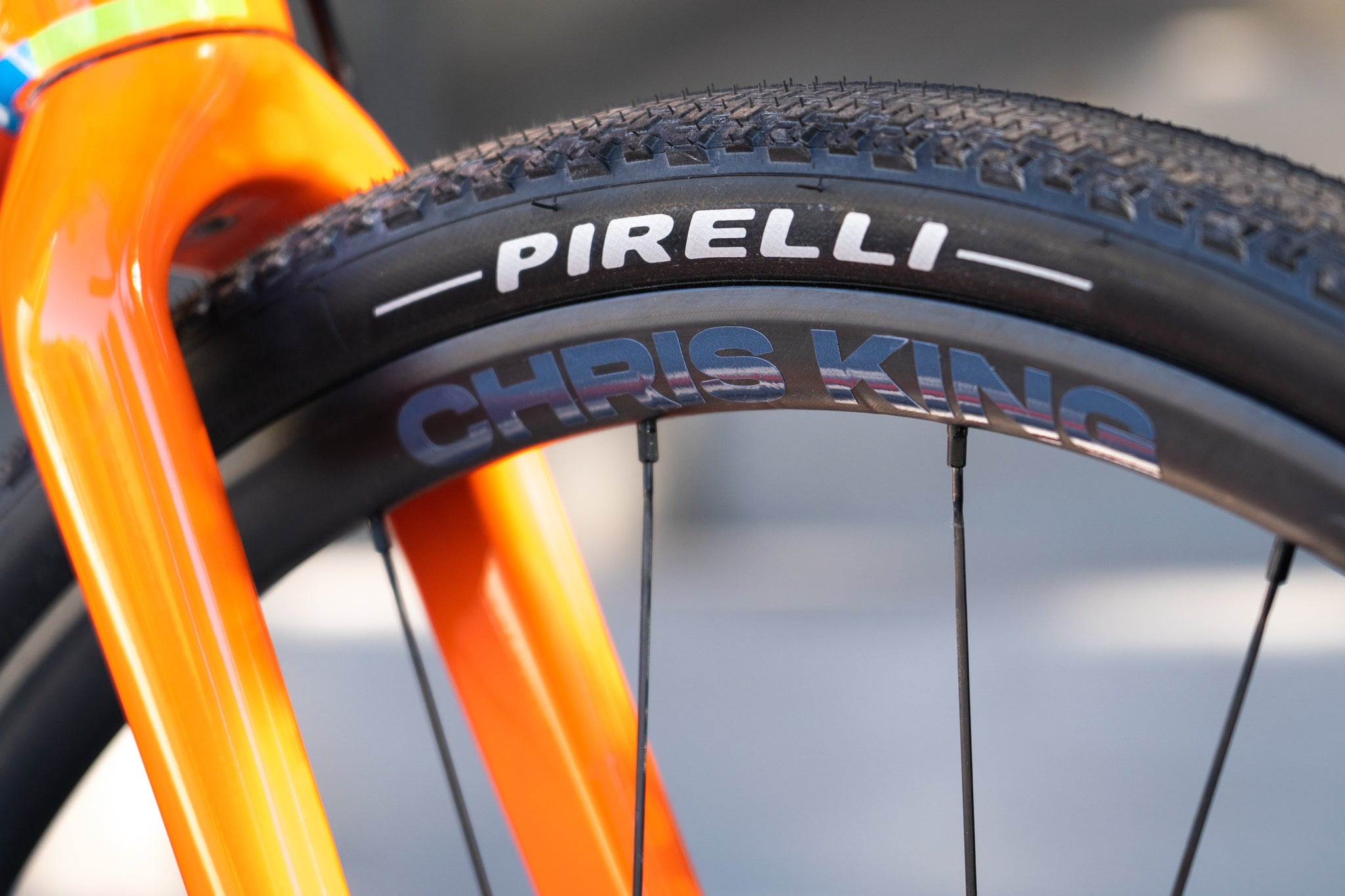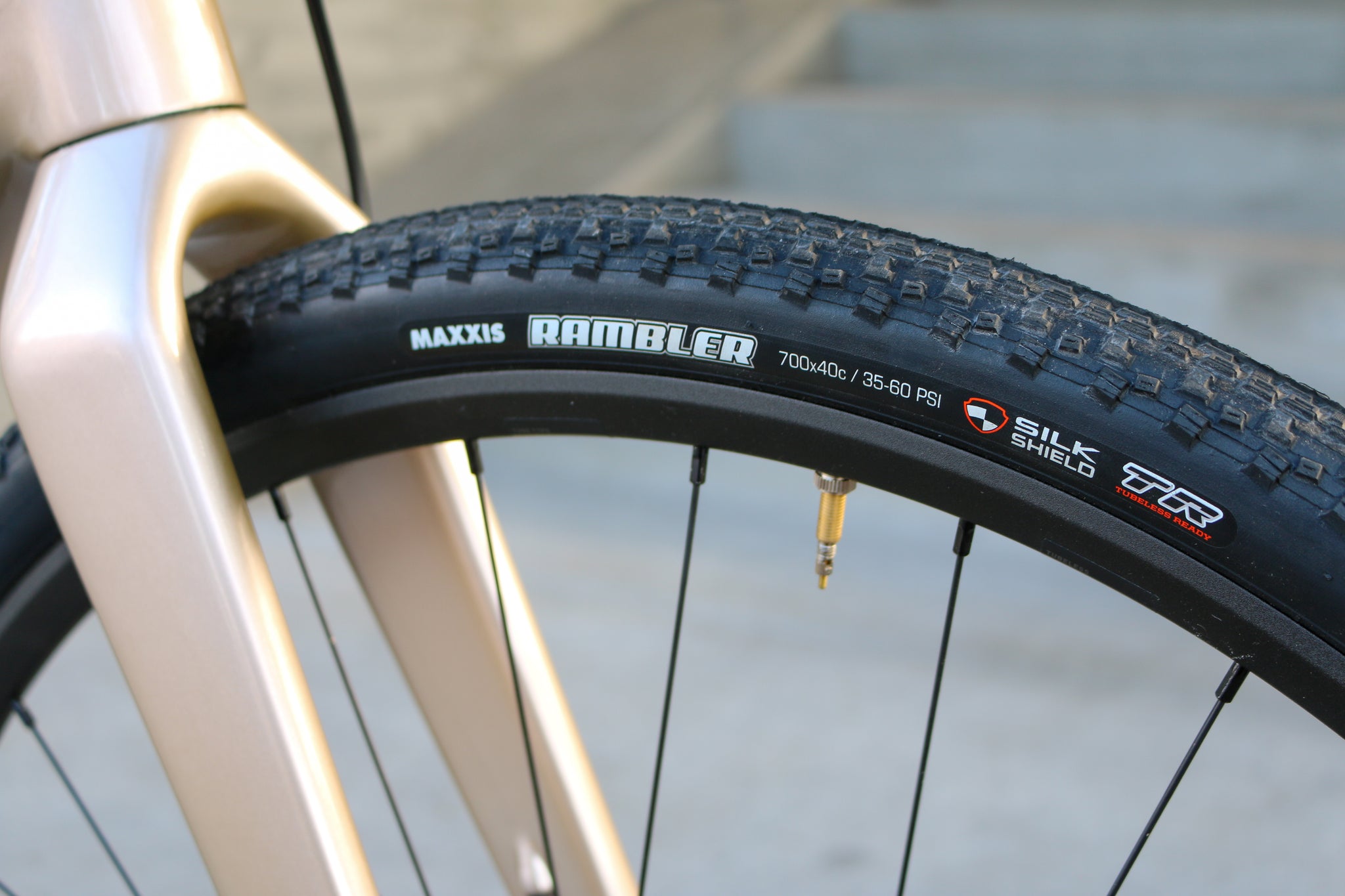
Gravel Bike Tire Buyer's Guide
Let’s jump into the deep end of the pool that is the world of gravel tires. For all those riders who crave speed on the pebbles, we are here to cover the tech, upgrades and options for all varieties of terrain that you can encounter on a gravel bike. After all, riders might possibly go from pavement, to a farm road, to singletrack all in one ride.

What Kind Of Tread Should I Be Running?
Getting ready for that gravel grinder loop of your dreams? Make sure to look at your tire choice vs the ride you want. A good tread pattern for the terrain can make or break the ride and may even be the unsung hero you needed. Gravel tire tread greatly affects your ride, and there are some different "rules of thumbs" compared to a MTB tire. In gravel, proper width is king, dictating the terms of traction and comfort. That all seems to be based a lot more on the width of your tires than the tread profile.
For reference, if I was wanting a tire for a gravel bike that spends a lot of time on rougher roads, maybe even jeep roads and light single track, I would rather have a 48c tire with very little tread, than a 35c tire with super aggressive tread. In all reality, you need very little center tread for most gravel terrain. With a lack of suspension, ironically the center tread breaks loose well before a MTB tire does just due to the more rigid bike. Because of this, a tire with fairly minimal center tread tends to be the better of both worlds, because if you're going to be breaking loose on the center tread anyways, might as well take the faster rolling resistance it gives you on smoother terrain and pavement. The same is not true for cornering knobs. Think of it like this – chasing loose gravel on the center tread is like a solo dance, swift and smooth on smoother terrain. But when the corners arrive, those sizable knobs? They're your dance partners, providing the traction you need in that one sketchy corner you hate. My personal favorite gravel set is something with fairly minimal center tread, but sizable cornering knobs, as that’s when the traction really matters.

The rule of thumb is going to depend on what you are riding. For people doing a 50/50 mix or more farm style rides and smooth pavement, I would look at something that is almost a slick in the middle, with cornering knobs, and around 38-42c. Speed demons and racers will typically be on 40c tires, with a similar tread pattern for the fastest set up. (This can change on the race course). If you're looking for a good all-round gravel tire, and are not as focused on how it rolls on smoother pavement, 42-45c tires with a mid sized tread and knob pattern in the center and more aggressive directional knobs on the corners will be up your alley. That will be the size that the majority of riders end up on. The more rough gravel riders and adventure seekers are going to want the full set of tread and 45-50c tires, because why not be ready for the chaos that might come? Bike packers might want to even consider running a 2.2 MTB tire, as long as your frame can clear it safely and within manufacturers specifications.
When it comes to weather conditions and tread pattern, gravel is a lot like MTB. The wider more spaced out knob patterns will let mud and crud flow off the tire, instead of packing. If you ride in a lot in snow, wetter mud, or loam, keep that in consideration. If what you ride is mainly dry and dusty, a fast rolling center with a tighter packed tread is great, but keep those cornering knobs.

A Bigger Tread Pattern Makes Me Slower Right?... Right?
“Bigger tread rolls slower” Yes. Well, not always. When you say that, it makes sense, but in all reality there are way more factors and you can get fast or slow rolling tires regardless of the tires' tread size. Enter TPI. When it comes to casings, they actually have a more adverse effect on the tire than the tread does. It seems counterintuitive to a certain point. A 40c slick tire, (think Maxxis Re-Fuse) actually rolls slower than a 40c semi slick with cornering knobs (think Pirelli Cinturato Gravel H). This seems counterintuitive where a tire that has more traction in corners and more knobs, is actually the faster rolling tire. This is due to TPI. TPI stands for “Threads Per Inch”. The casing of a tire has a cloth layer with threads running through it, and Maxxis puts it as: "The number of threads that cross through one square inch of a single ply of the tire's casing. Lower TPI gives better puncture, cut and abrasion resistance, but is heavier. Higher TPI conforms better to the terrain, offering a smoother, more comfortable ride, while reducing the weight of the tire.” According to bicyclerollingresisitance.com, the Pirelli Cinturato Gravel H(more tread) will roll faster by over 10 watts at the same pressure, compared to the Maxxis Re-Fuse(less tread). And the reason being, the Pirelli has a TPI of 120, and the Maxxis has a TPI of 60. Exactly half. I would pay attention to TPI fairly heavily when shopping for tires. Racers and people hunting for speed and grams, look for a higher TPI as this will roll much faster. Do keep in mind that for all the time the faster tire can get you, it can be lost in an instant when getting a puncture that the higher TPI tires are more prone to. If your worry is about being stranded in a remote area, or just a tire that lasts forever, go lower on the TPI.
Any Recommendations?
Still unsure of what tires to get? No worries, we are here to help! To get you started, here are some of our personal favorite tires that should serve you well.
Road/Gravel Split
-Pirelli Cinturato Gravel M 35c
-Vittoria Terreno DRY G2 38c
Gravel Race
-Pirelli Cinturato Gravel M 40c
-S-Works Pathfinder 2Bliss 42c
-Schwalbe G-One RS 43c
All-rounders
-Maxxis Rambler 45c
-Schwalbe G-One Allround 40c
Adventure
-Schwalbe G-One BITE 50c
-Maxxis Rambler 50c
Bike Packing (check frame specs first)
-Maxxis Ikon 29 TR EXO 2.2
-Vittoria Mezcal 27.5 x 2.1